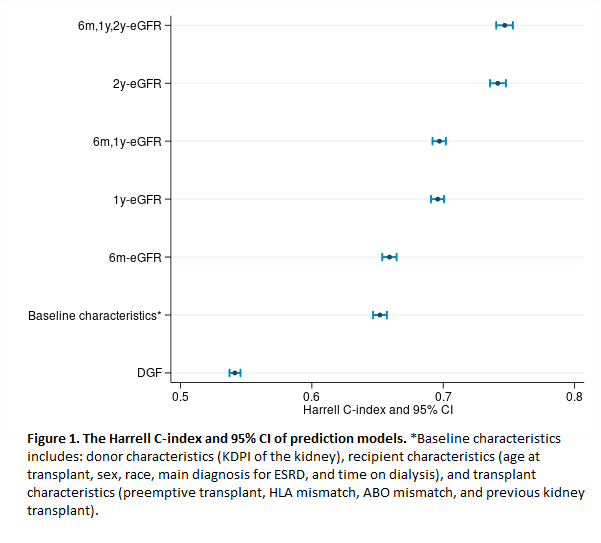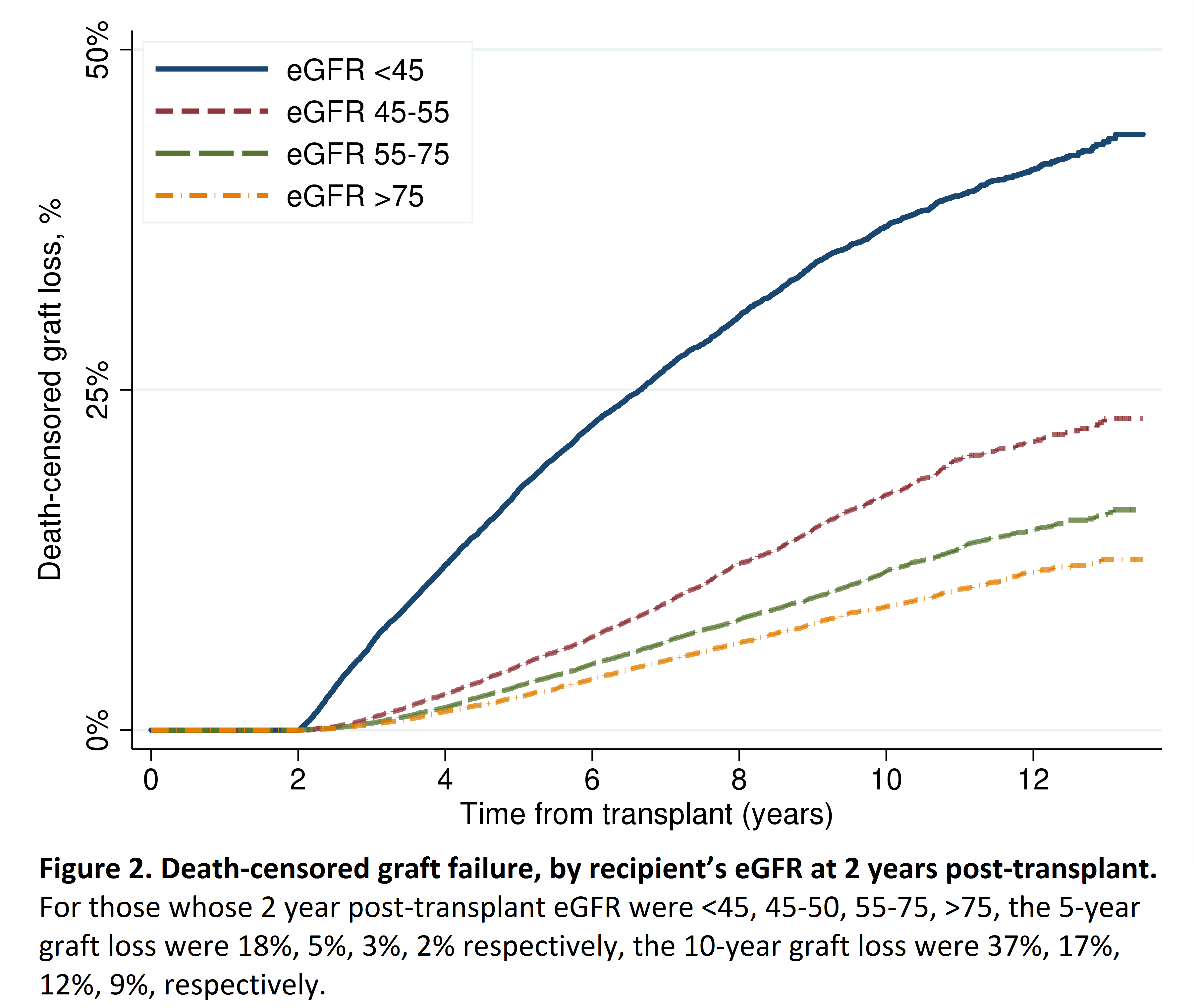Two-Year Post-Transplant eGFR as a Surrogate Outcome of Allograft Survival in Kidney Transplant Recipients
Johns Hopkins, Baltimore, MD
Meeting: 2020 American Transplant Congress
Abstract number: D-039
Keywords: Glomerular filtration rate (GFR), Graft failure, Kidney transplantation
Session Information
Session Name: Poster Session D: Kidney Living Donor: Long Term Outcomes
Session Type: Poster Session
Date: Saturday, May 30, 2020
Session Time: 3:15pm-4:00pm
 Presentation Time: 3:30pm-4:00pm
Presentation Time: 3:30pm-4:00pm
Location: Virtual
*Purpose: Graft failure is a major cause of morbidity and mortality in kidney transplant recipients. However, trials aimed to assess the effect of interventions on graft failure are expensive and time-consuming. The purpose of our study is to evaluate the possibility of using post-transplant eGFR, delayed graft function (DGF), and recipient baseline characteristics as surrogate markers of long-term graft failure.
*Methods: Using SRTR data 2006-2016, we identified 110,414 deceased donor kidney transplant (DDKT) recipients and followed them from transplantation to death-censored graft failure (DCGF), death, or administrative censoring on 6/30/2019. Those who died or developed DCGF within 6 months post-transplant were excluded from our study. We used potential surrogate outcomes to predict long-term DCGF using Cox regression and evaluated predictive power of each model using bootstrapped Harrell C-index.
*Results: The median follow-up time was 6.0 years (IQR: 3.9-8.7y). Among the 7 prediction models, post-transplant DGF poorly predicted long-term graft function (Harrell C-index: 0.540.540.55). The model based on baseline characteristics had better predictive power (Harrell C-index: 0.650.650.66). 6-month eGFR, 1-year, and 2-year eGFR had increased predictive validity (Harrell C-index: 0.650.660.66, 0.690.700.70, and 0.740.740.75, respectively). Adding 6-month and 1-year eGFR to the 2-year eGFR model did not appreciably improve predictive accuracy (Harrell C-index: 0.740.750.75; Figure1). A 10-unit decline in 2-year eGFR was associated with 35% increased risk of subsequent DCGF (HR=0.650.650.66, p<0.01; Figure2).
*Conclusions: Among outcomes evaluated, two-year post-transplant eGFR is the best predictor of long-term DCGF risk in DDKT recipients. This can potentially be used in kidney transplant trials as an inexpensive, non-invasive, and reliable surrogate outcome of long-term graft survival.
To cite this abstract in AMA style:
Yu S, Lee E, Zhang W, Segev D, Garonzik-Wang J, Massie A. Two-Year Post-Transplant eGFR as a Surrogate Outcome of Allograft Survival in Kidney Transplant Recipients [abstract]. Am J Transplant. 2020; 20 (suppl 3). https://atcmeetingabstracts.com/abstract/two-year-post-transplant-egfr-as-a-surrogate-outcome-of-allograft-survival-in-kidney-transplant-recipients/. Accessed December 10, 2025.« Back to 2020 American Transplant Congress


